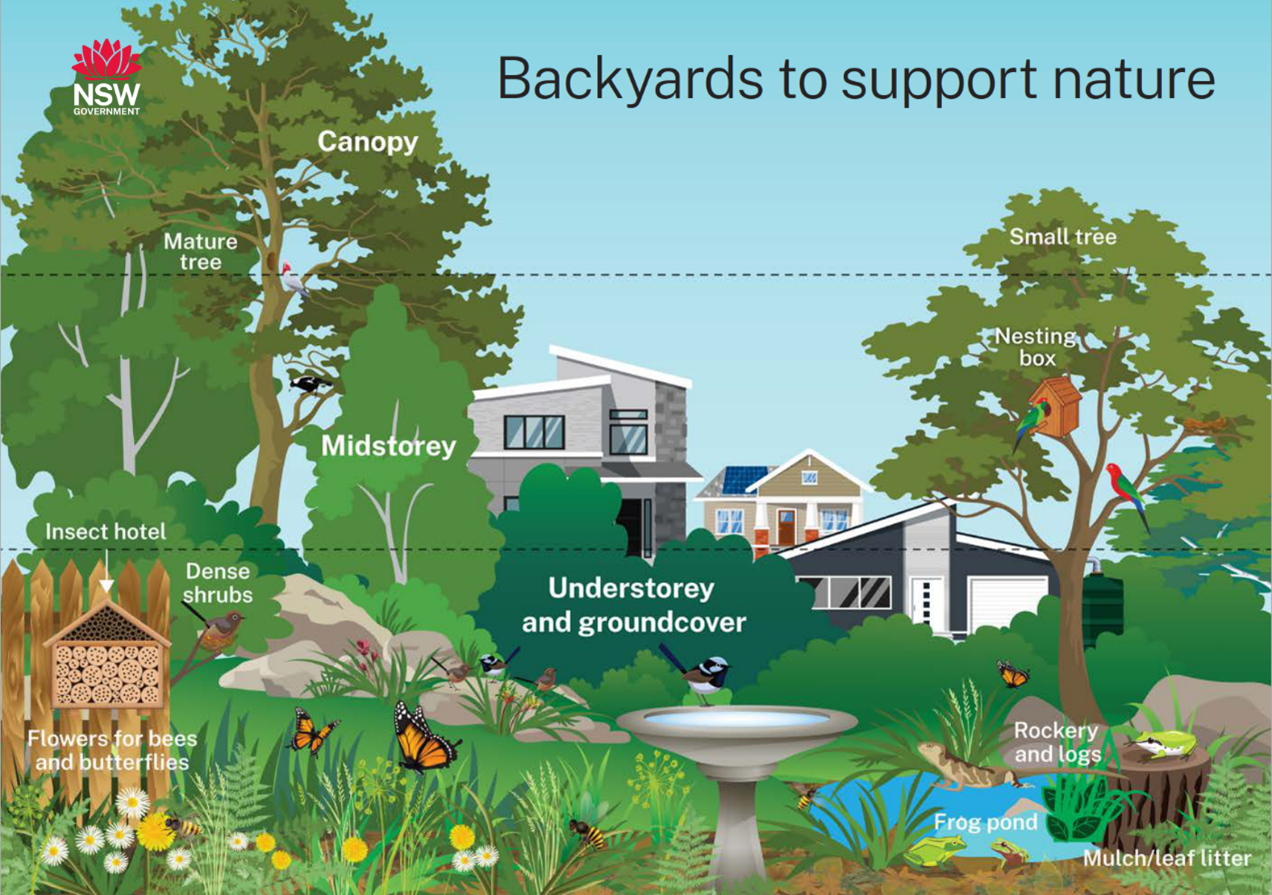Many people think of the ‘bush’ when they think of where native plants and animals live, but cities are also important when it comes to providing habitat for native animals. In some cases, cities contain the last remaining refuges for some of our threatened species.
Up to 90% of the land in cities is privately owned. Council protects remnant vegetation, and creates havens for locally native species on public land, but we need householders, businesses, schools and other landowners to do the same on private land. Encouraging habitat creation in backyards and other privately owned land is vital if we want our cities to remain as places where native plants and animals can thrive.
Every garden, no matter what size or where it is, can be a place for wild plants and animals to shelter, visit, or make their homes if we can garden in a way that supports the unique and special plants and animals native to our area.
By creating spaces for native plants and animals, we benefit too by:
- Creating beautiful spaces for people
- Learning and gaining new skills
- Strengthening our connections with community, nature and place, and
- Improving our health and wellbeing


